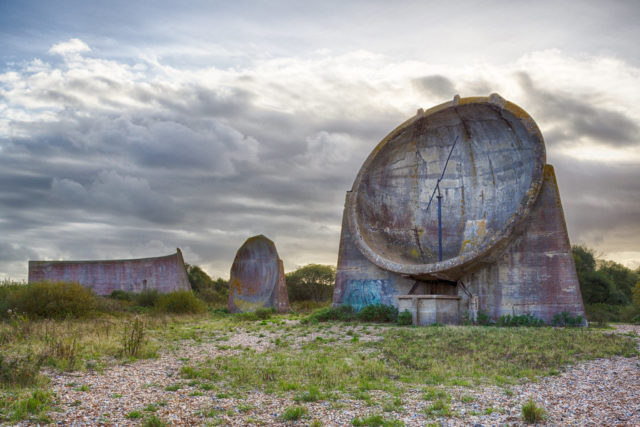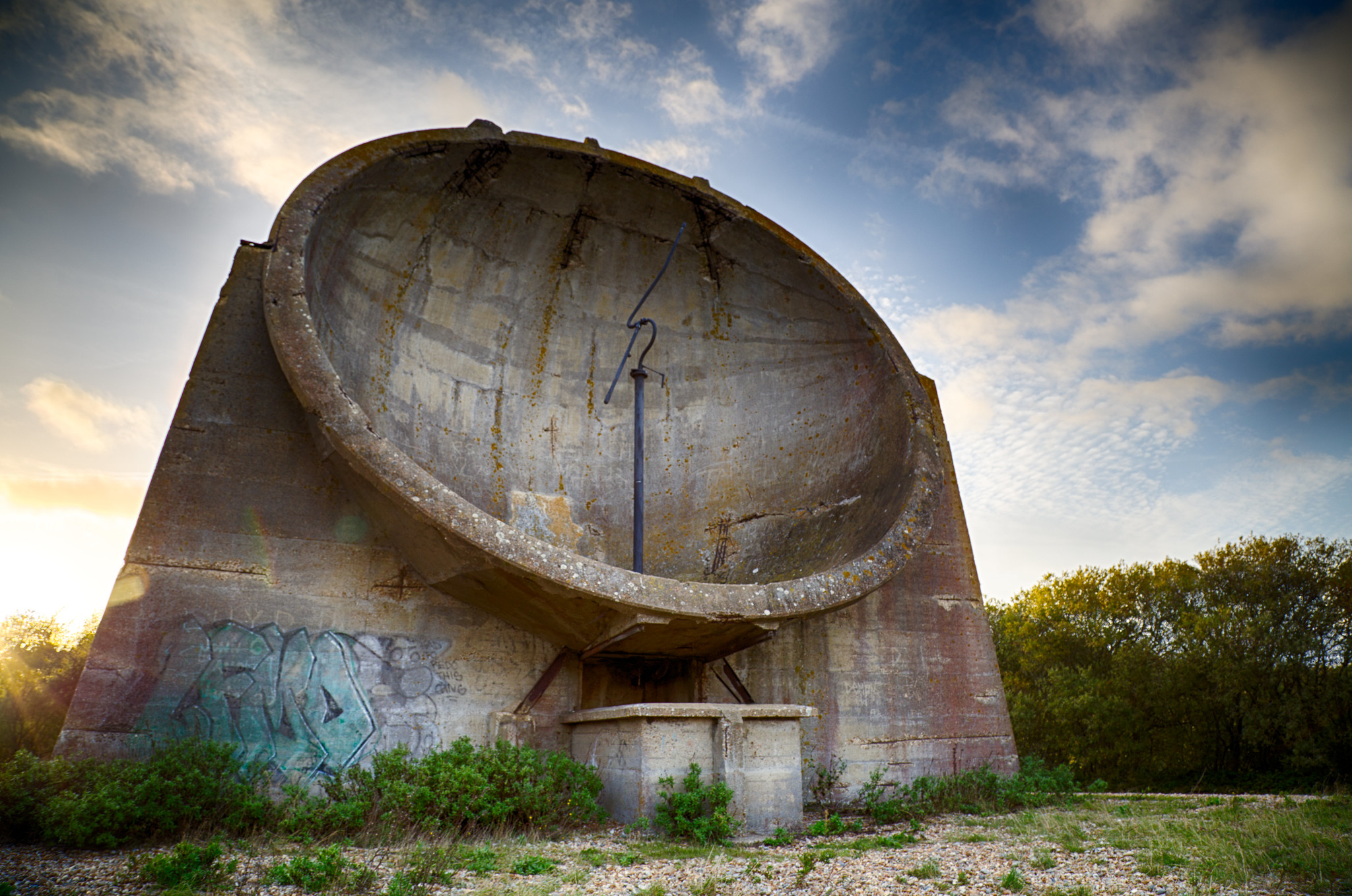Dungeness Acoustic Mirrors: During World War I, airships dropped bombs on cities across Britain. When airships were replaced by military planes, air raids posed an even greater threat.
The First World War had proven that the English Channel alone was not a reliable defense against enemy bombers. Consequently, more defensive measures were needed, and the idea of acoustic mirrors seemed to fit the bill. An acoustic mirror is a device that is used to reflect and concentrate soundwaves, enabling users to detect the noise of approaching enemy planes.
The most famous of the remaining acoustic mirrors are located near Dungeness in Kent, positioned between Greatstone-on-Sea and Lydd airfield. These three giant concrete structures were built between 1928 and 1935. They were positioned so that they would reflect the sound of planes or airships approaching Britain across the English Channel.
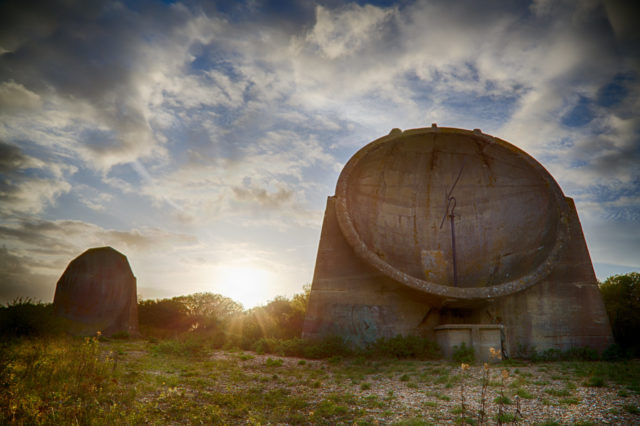
The different designs of the Dungeness mirrors show their experimental nature, as the designers weren’t sure which shape would work best. One mirror took the form of a long, curved wall measuring about 16 feet (4.8 meters) high and 200 feet (60 meters) long. It is one of only two such types of acoustic mirror in the world, the second one being in Malta.
The other two mirrors were built in a shape resembling a satellite dish. One mirror measured 30 feet (9 meters) in diameter and focused the noise of engines into a microphone that was attached to a special metal rod, which is still in evidence today. This meant that planes could be heard before they were seen.
The second mirror was identical in all respects, except it had a slightly smaller diameter measuring around 20 feet (6 meters). It has sadly lost its metal rod in the intervening years.
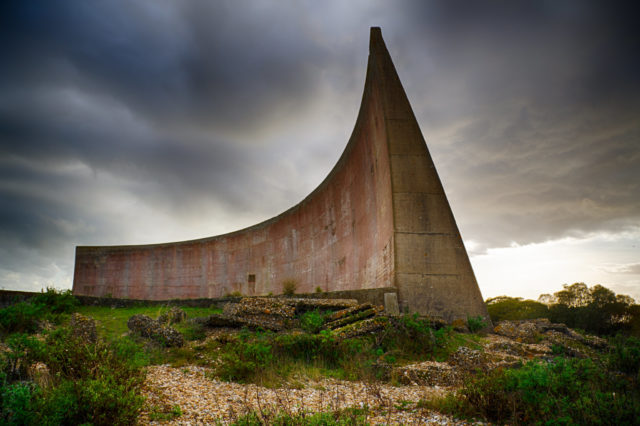
While the acoustic mirrors could initially provide a 15-minute warning, the development of faster aircraft undermined their usefulness. Eventually, a plane would actually be in sight by the time the mirrors had identified its approach. In addition, increasing background noise from the sea made it difficult to use the mirrors with any degree of success.
During the time that these mirrors were being installed, the development of radar was rapidly progressing. When radar became fully functional, the acoustic detection system became obsolete, and further experimentation with these concrete structures was halted.
However, as part of developing the mirrors, the scientists had put together a system of interconnected stations that would share data with a central post in order to pinpoint an enemy aircraft. This system was handed over to the radar operators and was used to make the British radar system more successful than the German one.
In the summer of 2003, English Heritage received a grant of £500,000 under the Aggregates Levy Sustainability Fund. The money was provided to stabilize and preserve the concrete mirrors. The foundations were strengthened and some damage done by gravel extraction was repaired.
Additional funds were secured so that visitor information could be placed around the site as part of the Historic Fortifications Network. All three sound mirrors have now been designated as Scheduled Ancient Monuments, recognizing their international importance.
The mirrors had been built in the middle of a disused gravel pit next to a deep lake. Initially, it was possible to gain access to the site, and the mirrors suffered from a minor amount of graffiti. Eventually, the artificial lake was extended so that the mirrors sat on their own island, a move that reduced the risk of vandalism.
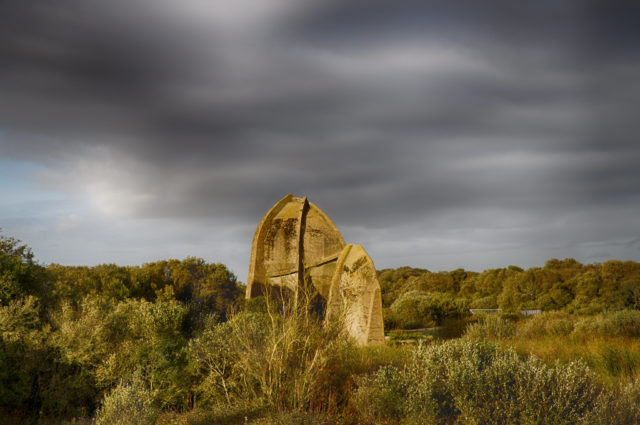
The area is now part of the Dungeness National Nature Reserve. Access to the gravel pit is by a swing bridge, which is mostly left in the open position so that it’s impossible to gain access without permission.
The only way to see the mirrors up close is to visit them during open days run by the RSPB. These take place several times a year between August and December, and more information can be found on their official website.
The photos were taken by Tim Anderson. A big thank you to him for allowing us to share them. He runs his own photography website, where you will find more photos of these sound mirrors and other beautiful locations.
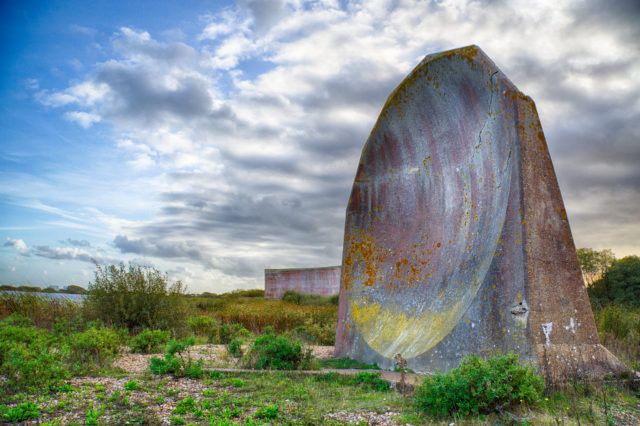
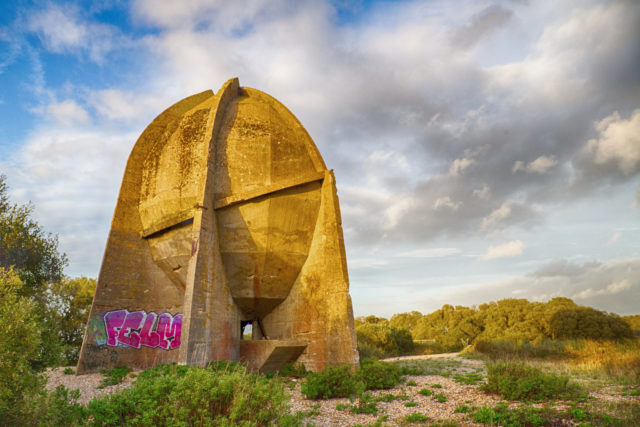
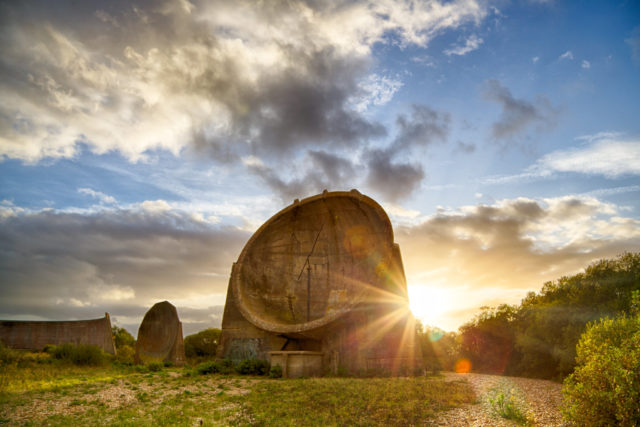
Another Article From Us: Remains of the Devil’s Slide Bunker, California
